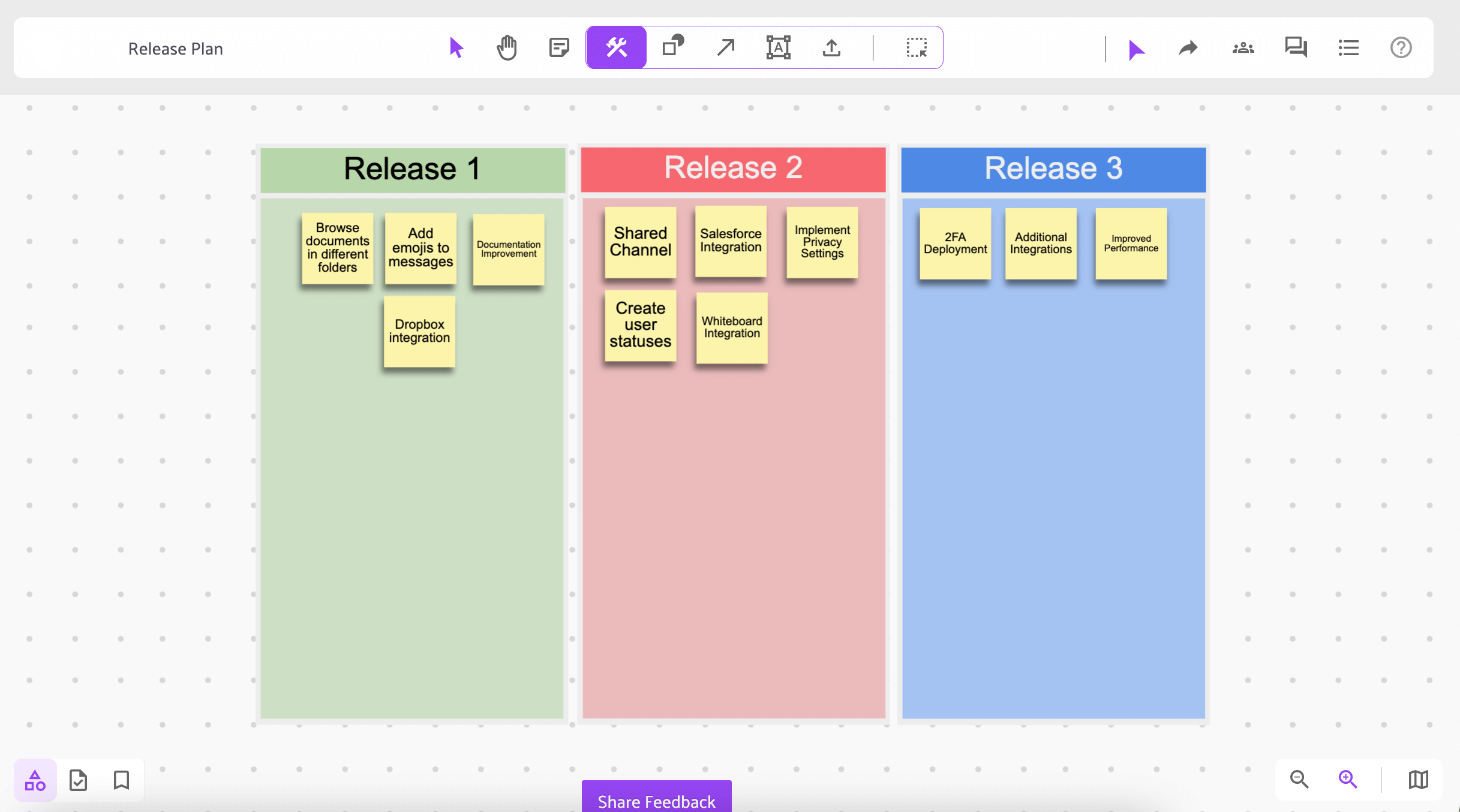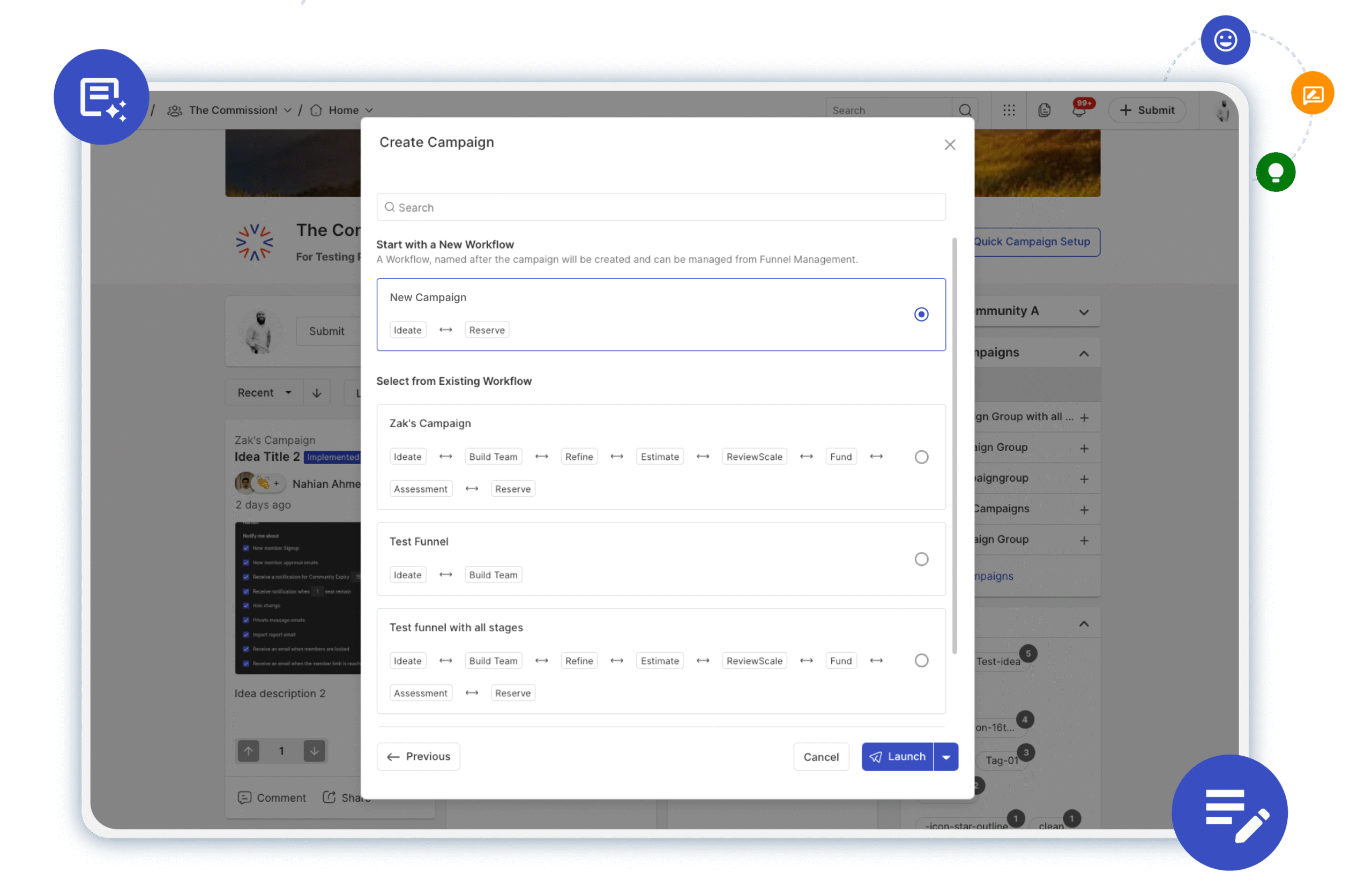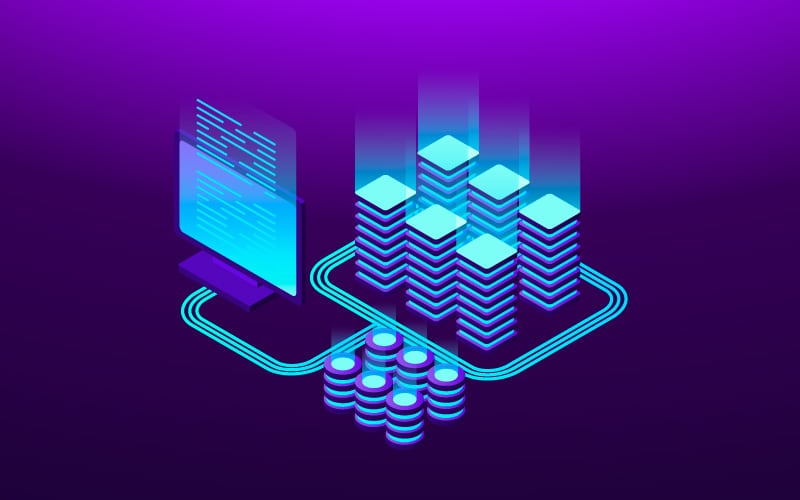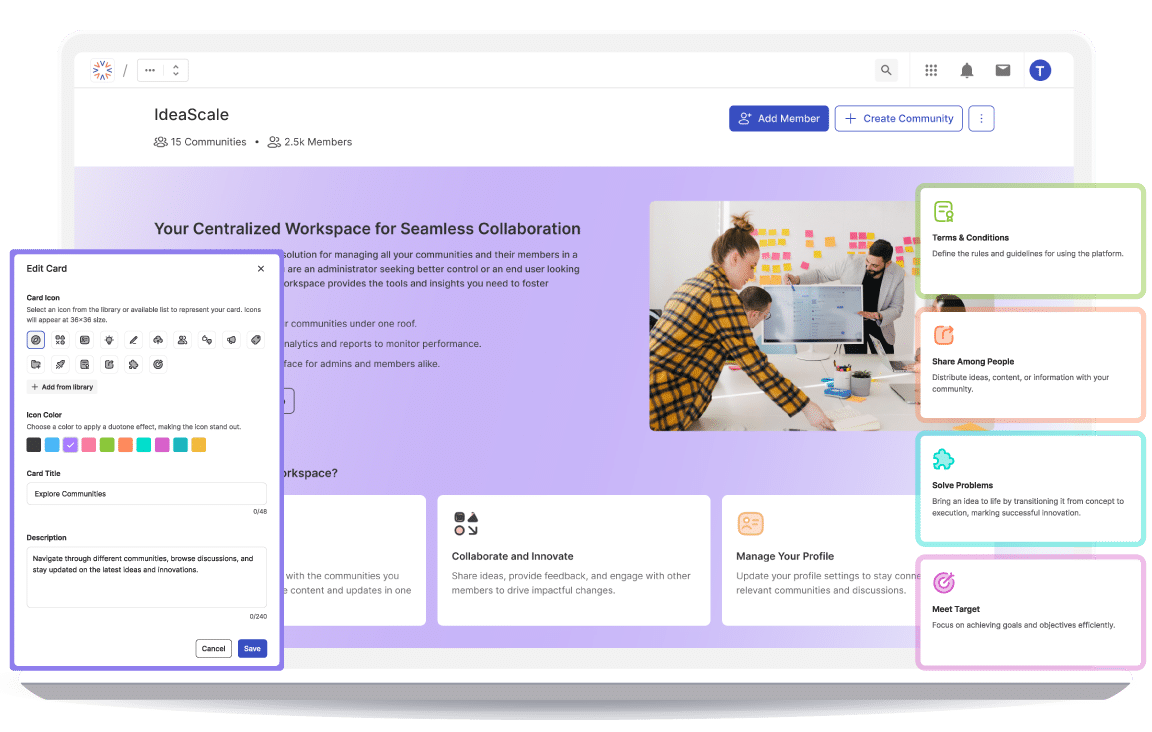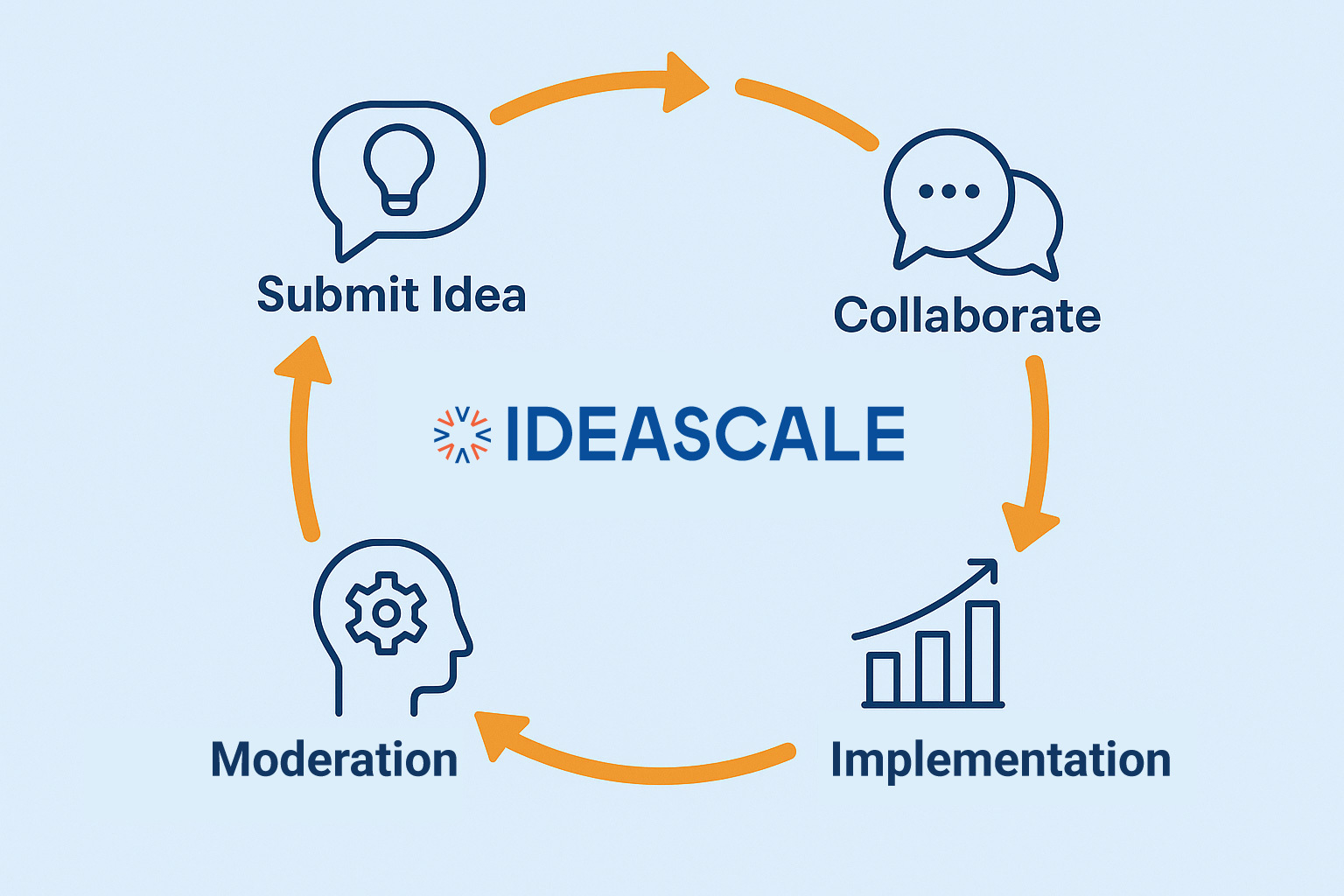Product Roadmap Examples
In the dynamic landscape of product development, crafting a strategic product roadmap is crucial for success. Explore our comprehensive guide to product roadmap examples tailored to meet various stakeholder needs.
1. Release Plan: Unlocking Execution Excellence:
A Release Plan Roadmap is your blueprint for executing work within a set timeframe. Discover how this roadmap highlights upcoming product features, improvements, and bug fixes, making it ideal for milestone planning. Visualize success with our sample template.
2. Sprint Plan Roadmap: Empowering Delivery Focus
Sprint Plan Roadmaps empower product teams by focusing on delivery aspects. Learn how to keep your development team informed about upcoming work, breaking it into manageable sprints. Enhance your project plan visibility and keep your team aligned with the project vision.
3. Now-Next-Later Roadmap: Adaptable Prioritization for Dynamic Environments
Navigate through changing landscapes with the Now-Next-Later Roadmap. Communicate priorities effectively over different timeframes, managing features for the present and the future. Perfect for fast-paced environments, this roadmap ensures strategic communication to a wide audience.
Besides, this product roadmap is also the best choice to keep things on track. Here is an example of this roadmap:
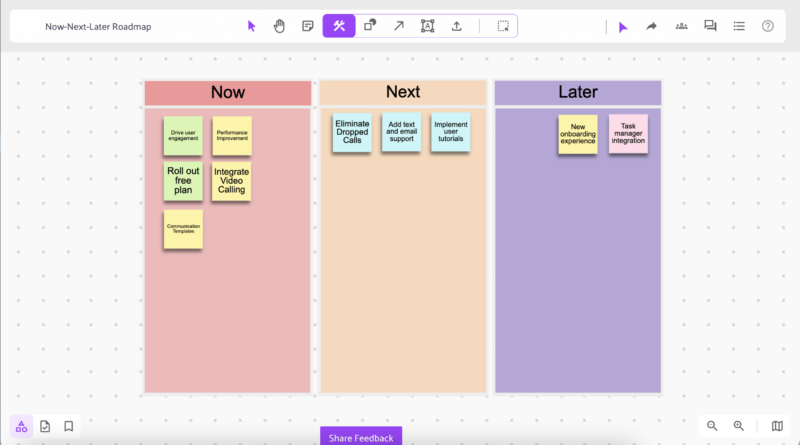
4. Kanban Roadmap: Delivery-Focused Transparency
Unleash the power of the Kanban Roadmap to analyze backlog, plan, and manage in-progress work. Collaborate seamlessly with your product team without committing to specific delivery dates. Keep your delivery team motivated by showcasing their progress within the entire development process.
5. Feature Timeline Roadmap: Strategic Sprint and Deadline Planning
Dive into the Feature Timeline Roadmap, adding a time element to your sprint and deadline planning. While not ideal for all agile teams, this roadmap effectively communicates goals to stakeholders and peers. Plan your project meticulously, allocate resources strategically, and track your progress.
6. Objectives Roadmap: Integration for Complex Environments
In complex organizational landscapes, the Objectives Roadmap is your solution. Connect multiple strategies seamlessly, aligning business and product strategies. Integrate feature release plans with overarching organizational goals, adding depth to your product roadmap.
7. Roadmap of Release: Transparent Cross-Functional Communication
Master the art of clear communication with the Roadmap of Release. Perfect for cross-functional teams, this roadmap ensures a low-maintenance approach to track progress based on essential deadlines. Ideal for agile environments, promoting transparency in communication.
8. Strategic Product Roadmap: High-Level Vision for Project Success
Elevate your product vision with the Strategic Product Roadmap. Align with project priorities and goals, solving various problems to add significant value to your current product. Illuminate the vision behind new features and deployments, emphasizing their importance to the overall team goals.
Learn more: How to Integrate User Research into Product Development
Conclusion
Creating a successful product roadmap is a complex yet critical factor in your product’s journey. It’s akin to embarking on a trip without a map. Take the time to prepare an efficient product roadmap, ensuring your journey to success is well-guided.
Most Recent Posts
Explore the latest innovation insights and trends with our recent blog posts.

